Artist: William Henry Bartlett (1858-1932) Title: A Carrageen Moss Gatherer (1910) Signature: signed lower right and dated '10 Medium: oil on canvas Size: 71 x 48cm (28 x 18.9in) Framed Size: 97 x 73.3cm (38.2 x 28.9in) Provenance: Artist's label verso; Royal Academy 1910, Bradley & Co. London Agents (label verso); Private Collection Exhibited: Royal Academy 1910 a#morebtn { color: #de1d01; } a#morebtn:hover { cursor: pointer;} Dressed in a long blue skirt and apron around her waist, a young woman clambers across rocks by the seashore, collecting 'Carrageen Moss'. Rich in natural gelatin and iodine, this seaweed is still much sought-after today. In the past it was used for medical purposes, but today is mainly used for coo... Read more Dressed in a long blue skirt and apron around her waist, a young woman clambers across rocks by the seashore, collecting 'Carrageen Moss'. Rich in natural gelatin and iodine, this seaweed is still much sought-after today. In the past it was used for medical purposes, but today is mainly used for cooking. The woman, carrying a large wicker basket, is silhouetted against the bright silvery-green sea. In the distance is a sandy beach and cottages, with blue hills in the background. Exhibited at the Royal Academy in 1910, this view in this painting may well be based in Co. Donegal rather than Connemara, as it bears a label on the reverse giving the title, and the artist's address as 'Rutland Island, Burtonport, Co. Donegal', at which location he painted many watercolours and oils. Although an English artist, from Ventor on the Isle of Wight, William Henry Bartlett was one of the first artists to base his subject-matter almost exclusively on the people and landscapes of Connemara. In Paris in the late 1870's, he studied at the Ecole des Beaux Arts and the Academie Julian, learning the French Realist technique of painting in the open air. His paintings of Connemara generally depict coastal scenes, often with seaweed gatherers, fishermen and open fishing boats. Having been introduced to the West of Ireland around 1878, probably by the American artist Howard Helmick who also studied in Paris, Bartlett based himself at Renvyle and made painting expeditions in Connemara. He also worked on Achill Island and in Co. Donegal. While his written descriptions of Connemara can incline towards stereotypes, referring to his admiration of 'picturesque' costumes, his paintings are admirable essays in Realism, echoing the style and subject matter of Winslow Homer There is a strong anthropological vein in Bartlett's art, with many of his paintings depicting everyday subjects such as loading turf, funerals, seal hunting, gathering kelp and cleaning nets. He was more inclined to depict clinker-built wooden rowing boats, rather than the traditional canvas-covered currachs, and his depictions of the people of Connemara are honest and straightforward. Although travelling regularly to the West of Ireland, Bartlett remained based in England, and in 1886 was one of the founders of the New English Art Club. He also made painting trips to St. Ives, and, maintaining his links with France, in 1889 was awarded a silver medal at the Paris exhibition. Peter Murray, October 2020
Artist: William Henry Bartlett (1858-1932) Title: A Carrageen Moss Gatherer (1910) Signature: signed lower right and dated '10 Medium: oil on canvas Size: 71 x 48cm (28 x 18.9in) Framed Size: 97 x 73.3cm (38.2 x 28.9in) Provenance: Artist's label verso; Royal Academy 1910, Bradley & Co. London Agents (label verso); Private Collection Exhibited: Royal Academy 1910 a#morebtn { color: #de1d01; } a#morebtn:hover { cursor: pointer;} Dressed in a long blue skirt and apron around her waist, a young woman clambers across rocks by the seashore, collecting 'Carrageen Moss'. Rich in natural gelatin and iodine, this seaweed is still much sought-after today. In the past it was used for medical purposes, but today is mainly used for coo... Read more Dressed in a long blue skirt and apron around her waist, a young woman clambers across rocks by the seashore, collecting 'Carrageen Moss'. Rich in natural gelatin and iodine, this seaweed is still much sought-after today. In the past it was used for medical purposes, but today is mainly used for cooking. The woman, carrying a large wicker basket, is silhouetted against the bright silvery-green sea. In the distance is a sandy beach and cottages, with blue hills in the background. Exhibited at the Royal Academy in 1910, this view in this painting may well be based in Co. Donegal rather than Connemara, as it bears a label on the reverse giving the title, and the artist's address as 'Rutland Island, Burtonport, Co. Donegal', at which location he painted many watercolours and oils. Although an English artist, from Ventor on the Isle of Wight, William Henry Bartlett was one of the first artists to base his subject-matter almost exclusively on the people and landscapes of Connemara. In Paris in the late 1870's, he studied at the Ecole des Beaux Arts and the Academie Julian, learning the French Realist technique of painting in the open air. His paintings of Connemara generally depict coastal scenes, often with seaweed gatherers, fishermen and open fishing boats. Having been introduced to the West of Ireland around 1878, probably by the American artist Howard Helmick who also studied in Paris, Bartlett based himself at Renvyle and made painting expeditions in Connemara. He also worked on Achill Island and in Co. Donegal. While his written descriptions of Connemara can incline towards stereotypes, referring to his admiration of 'picturesque' costumes, his paintings are admirable essays in Realism, echoing the style and subject matter of Winslow Homer There is a strong anthropological vein in Bartlett's art, with many of his paintings depicting everyday subjects such as loading turf, funerals, seal hunting, gathering kelp and cleaning nets. He was more inclined to depict clinker-built wooden rowing boats, rather than the traditional canvas-covered currachs, and his depictions of the people of Connemara are honest and straightforward. Although travelling regularly to the West of Ireland, Bartlett remained based in England, and in 1886 was one of the founders of the New English Art Club. He also made painting trips to St. Ives, and, maintaining his links with France, in 1889 was awarded a silver medal at the Paris exhibition. Peter Murray, October 2020
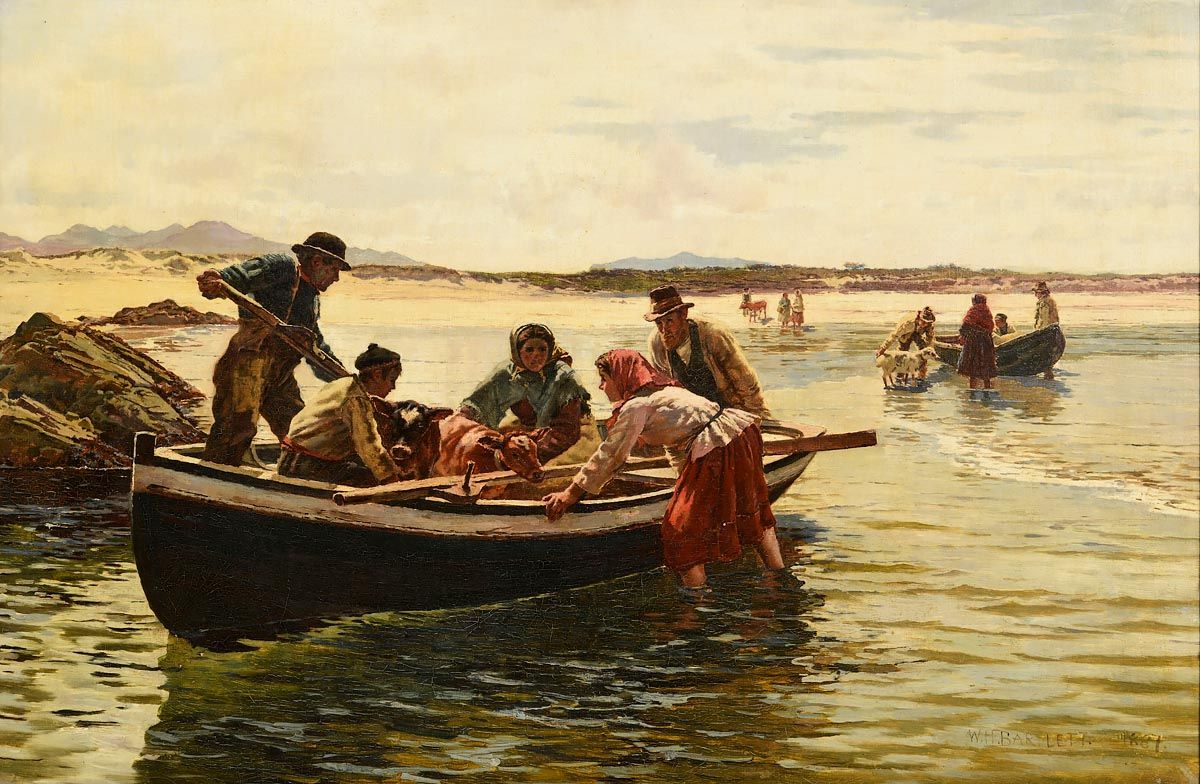






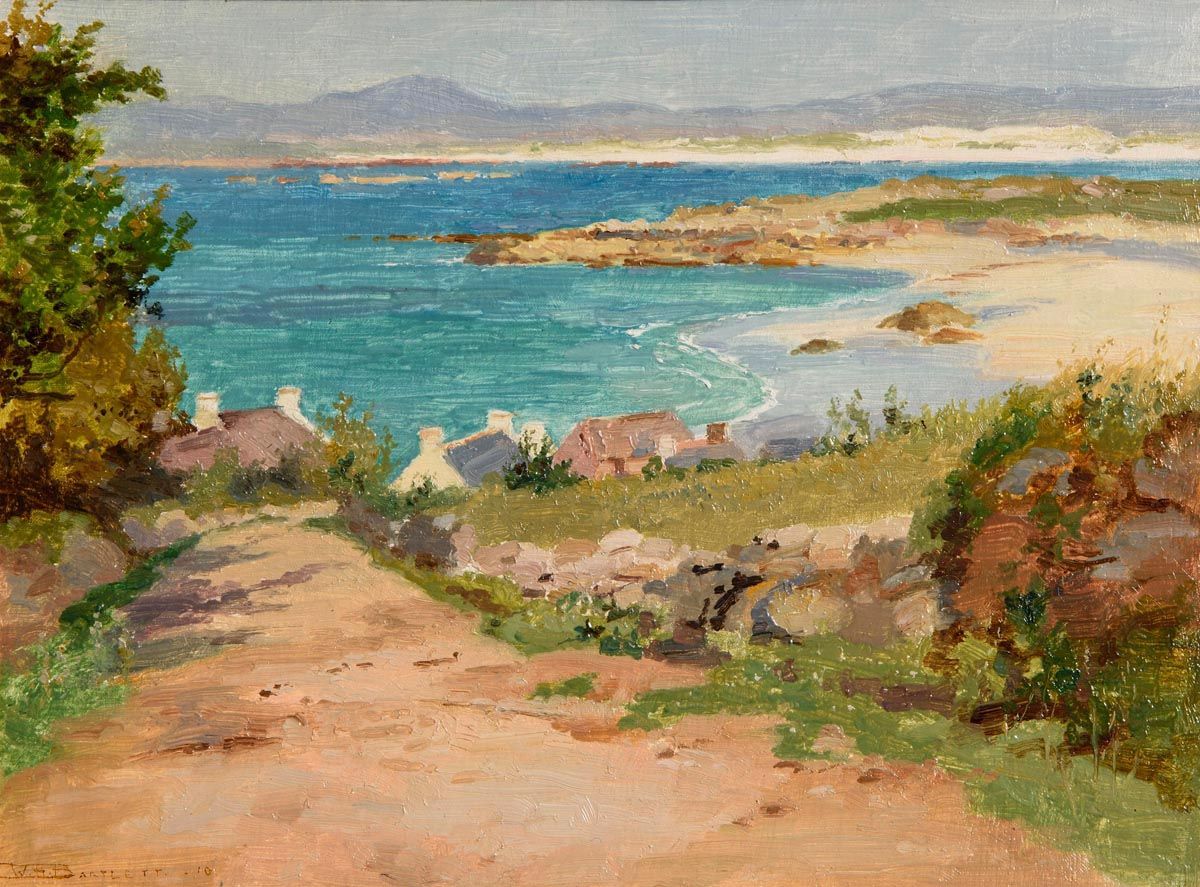
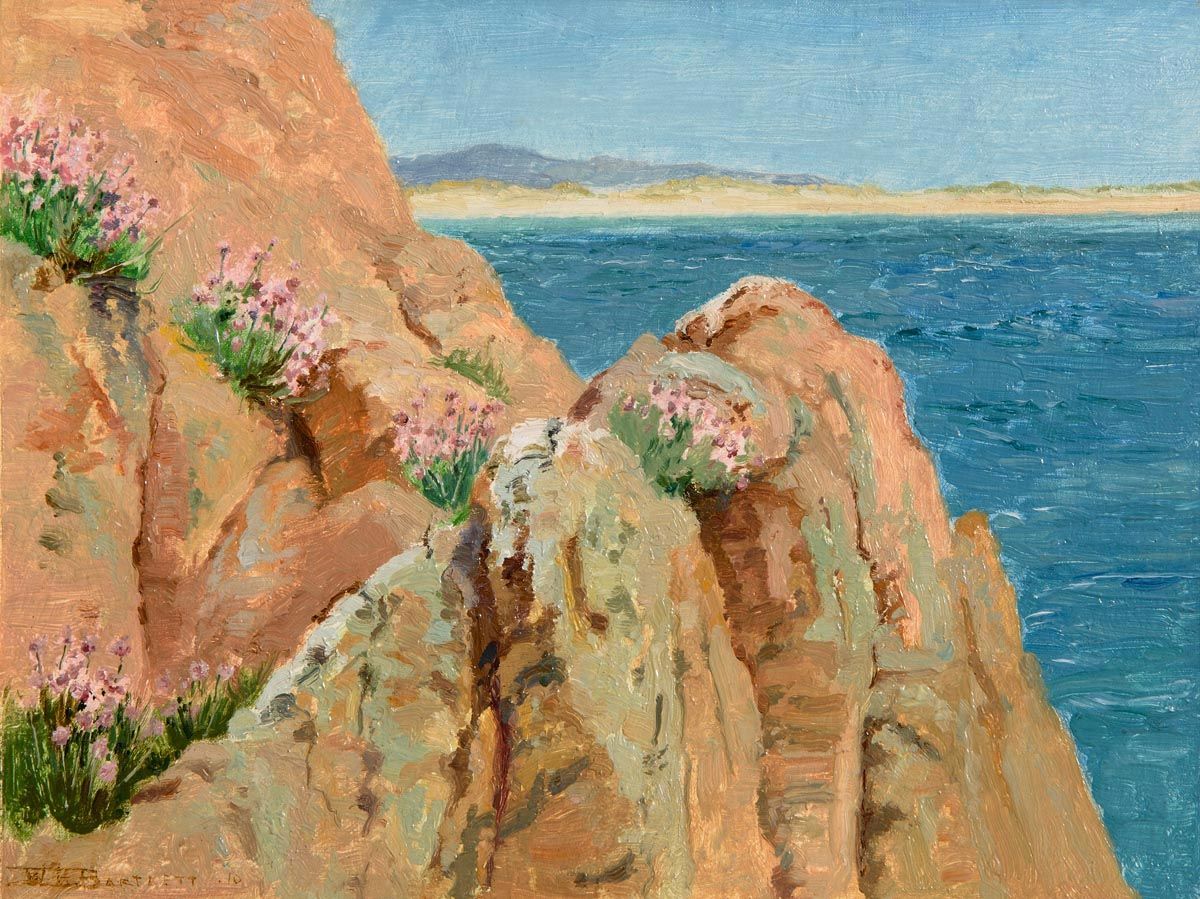
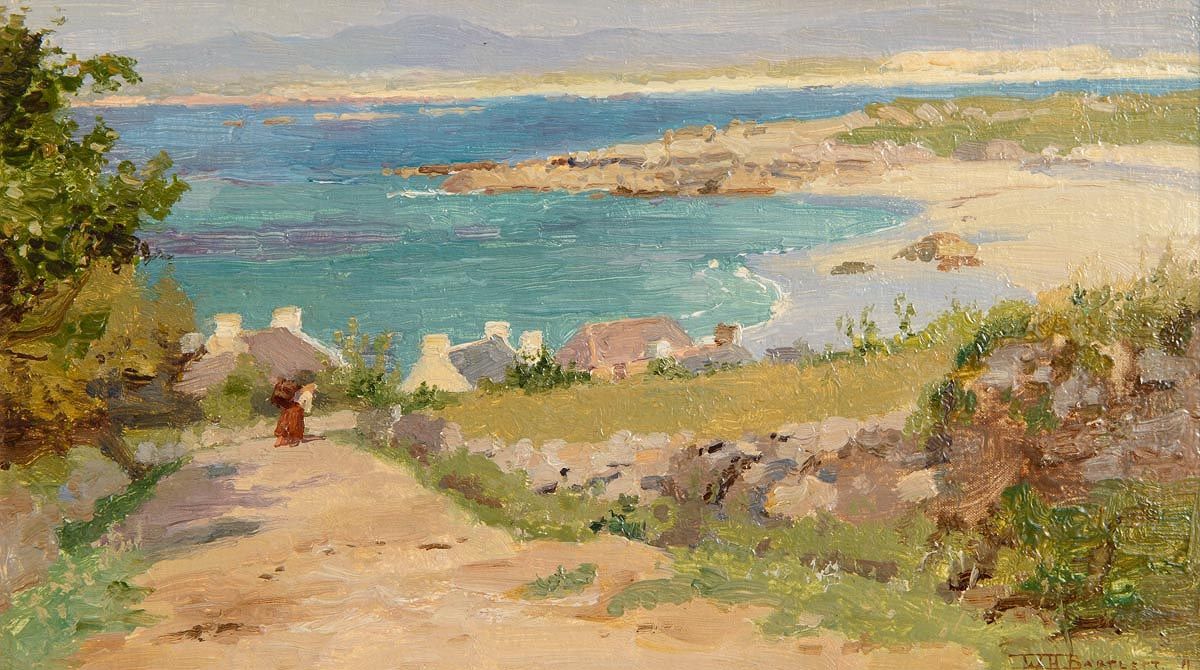
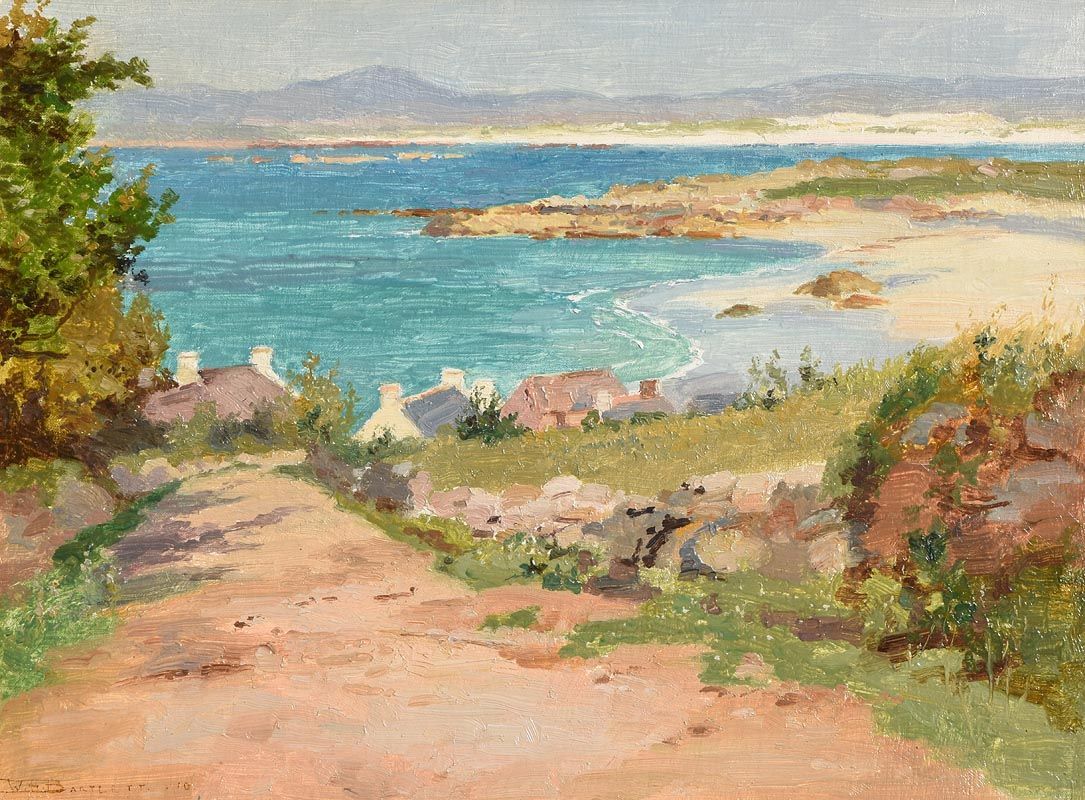
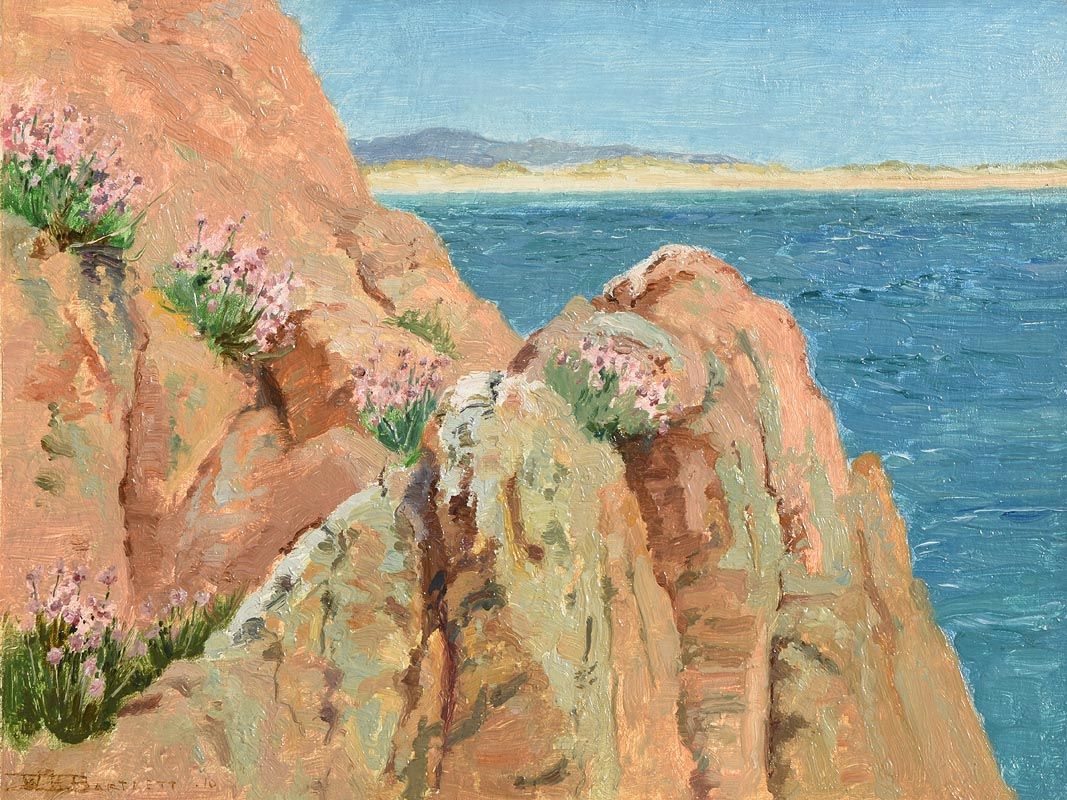
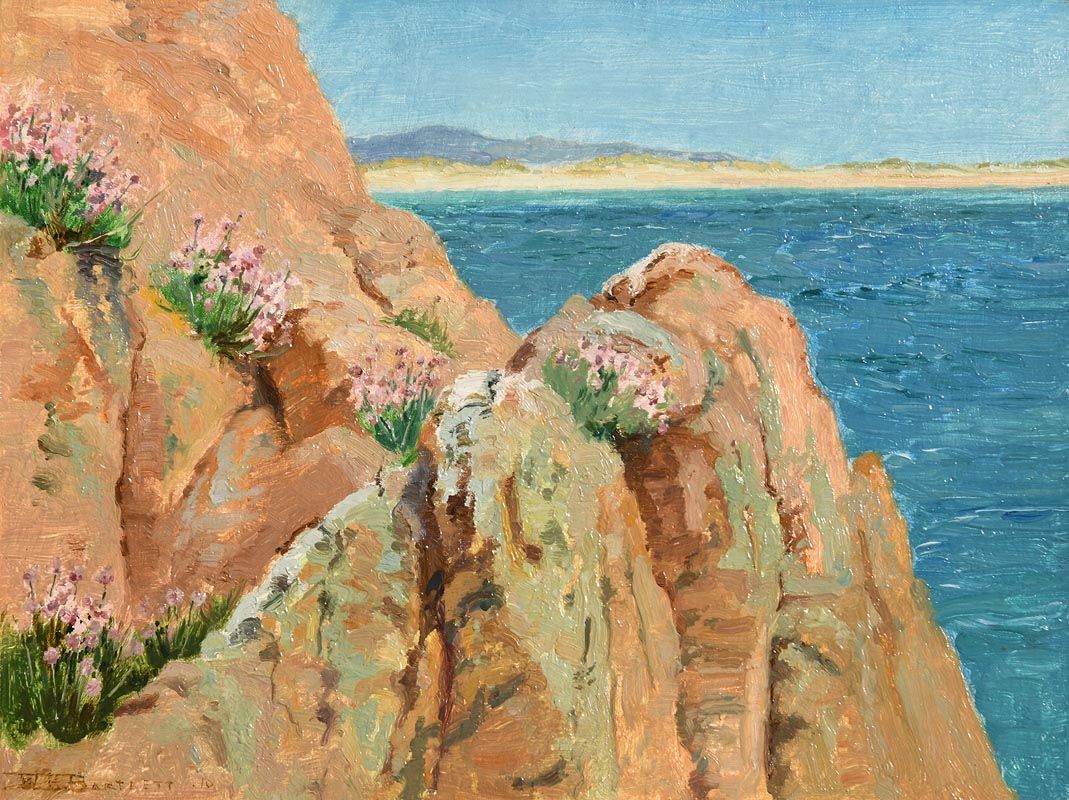
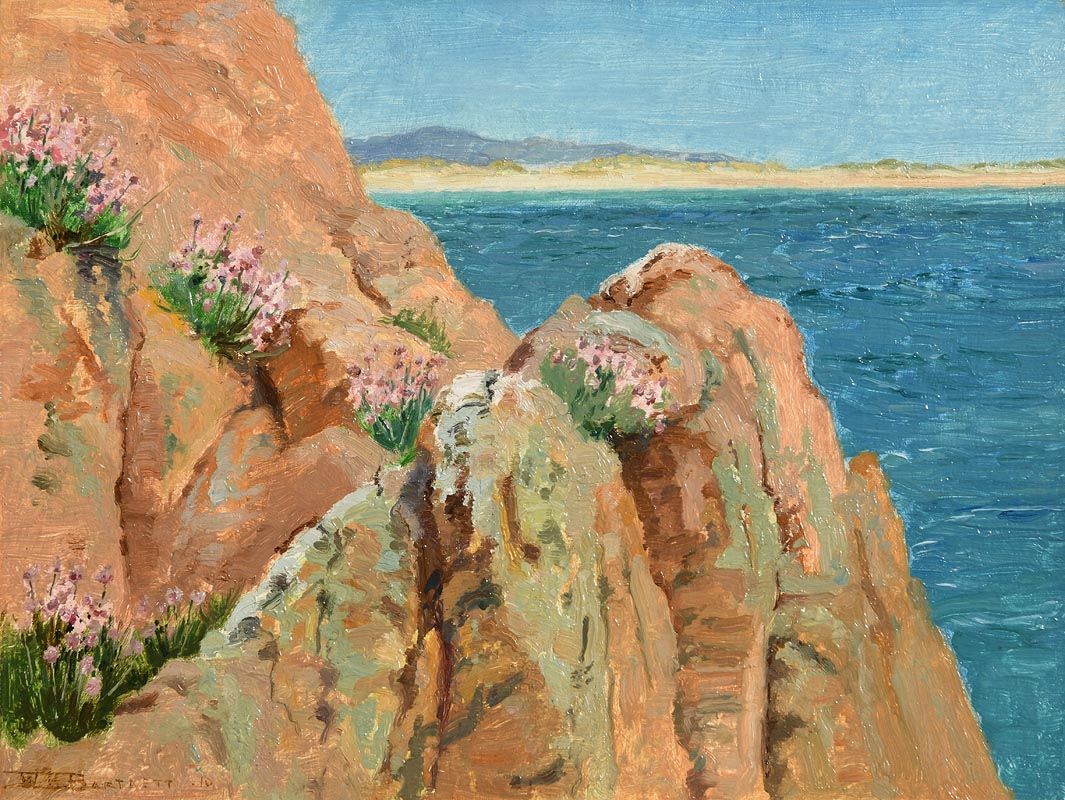
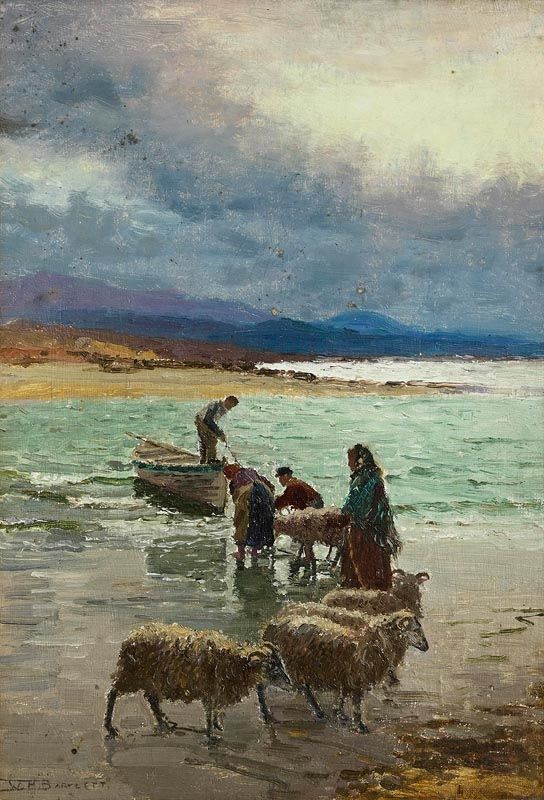
Testen Sie LotSearch und seine Premium-Features 7 Tage - ohne Kosten!
Lassen Sie sich automatisch über neue Objekte in kommenden Auktionen benachrichtigen.
Suchauftrag anlegen